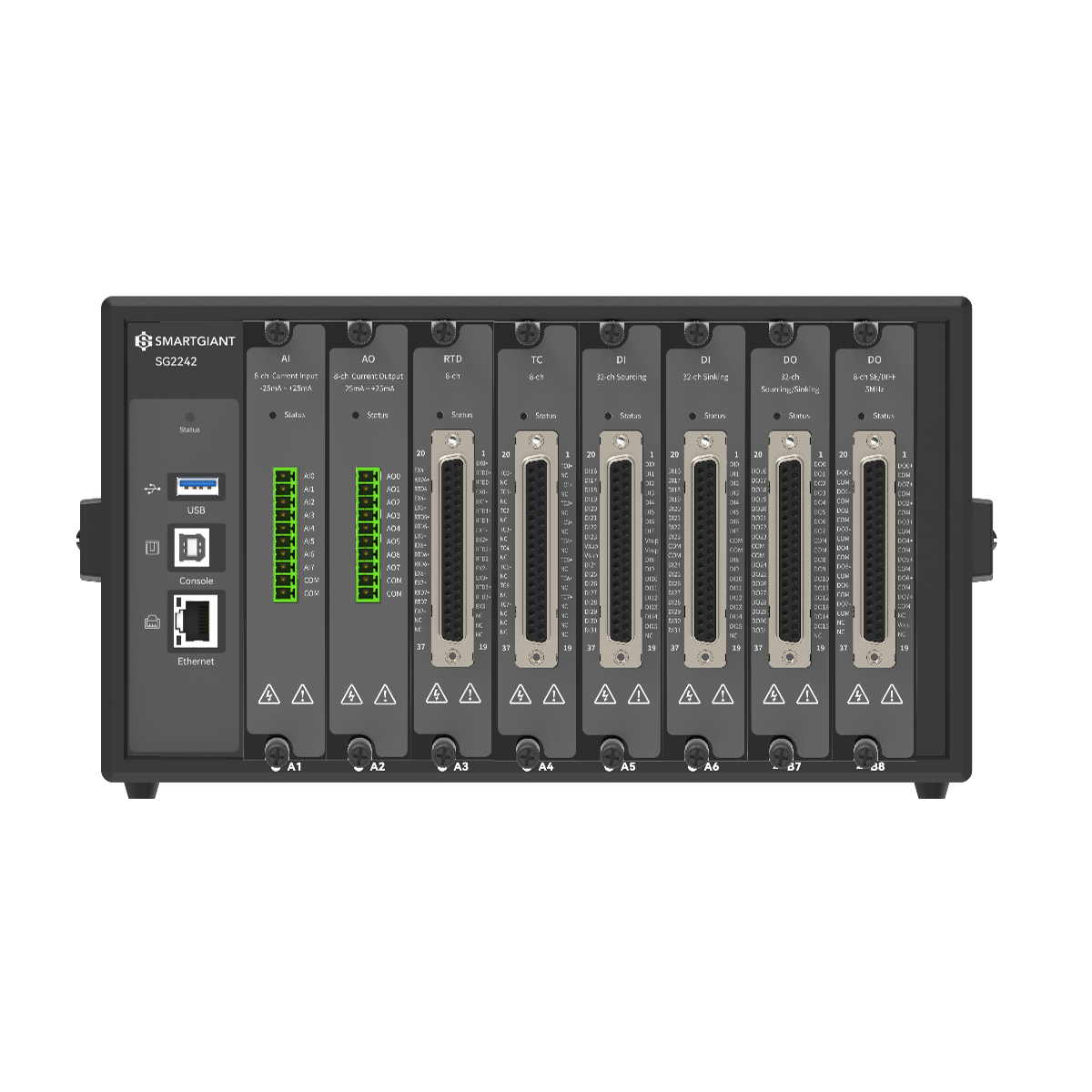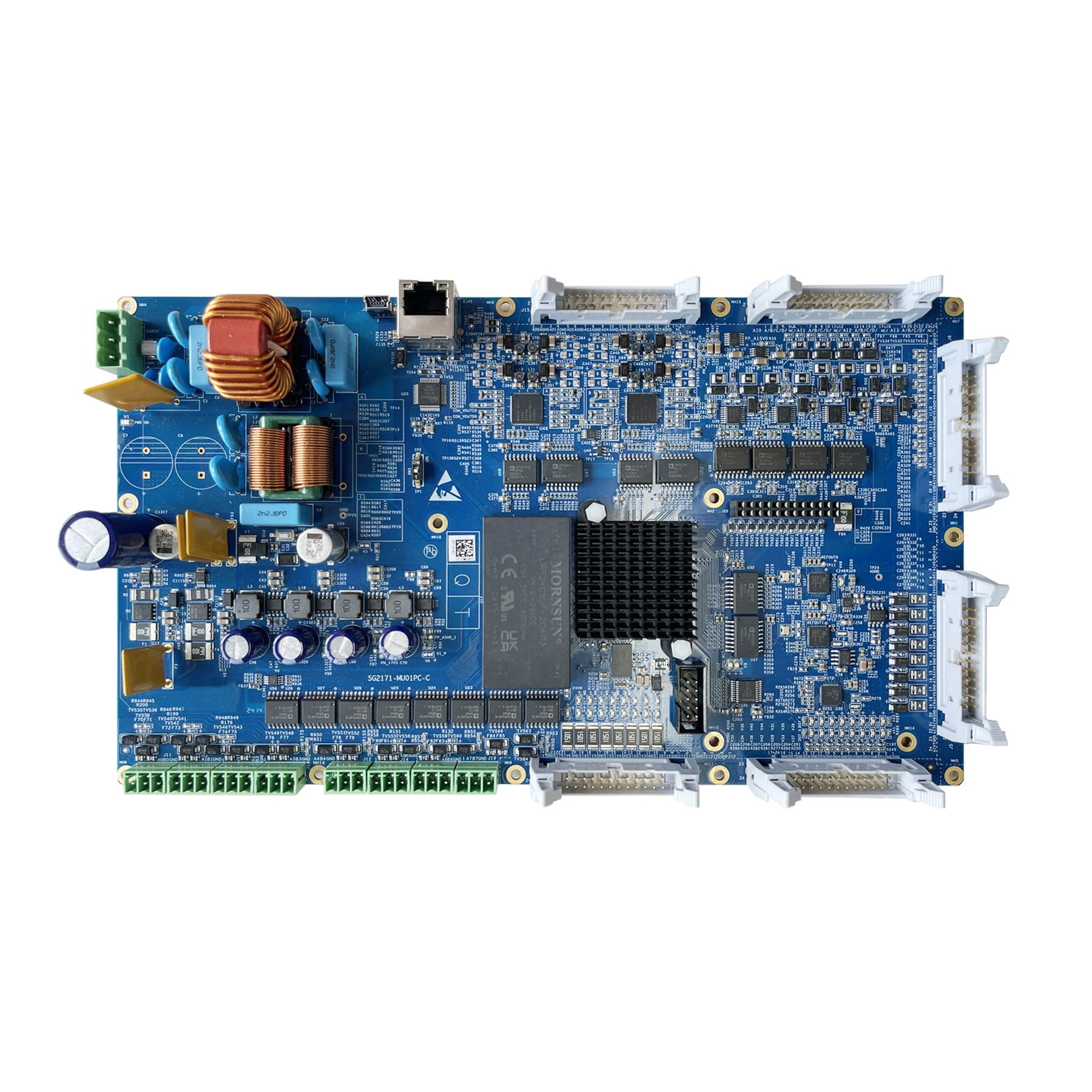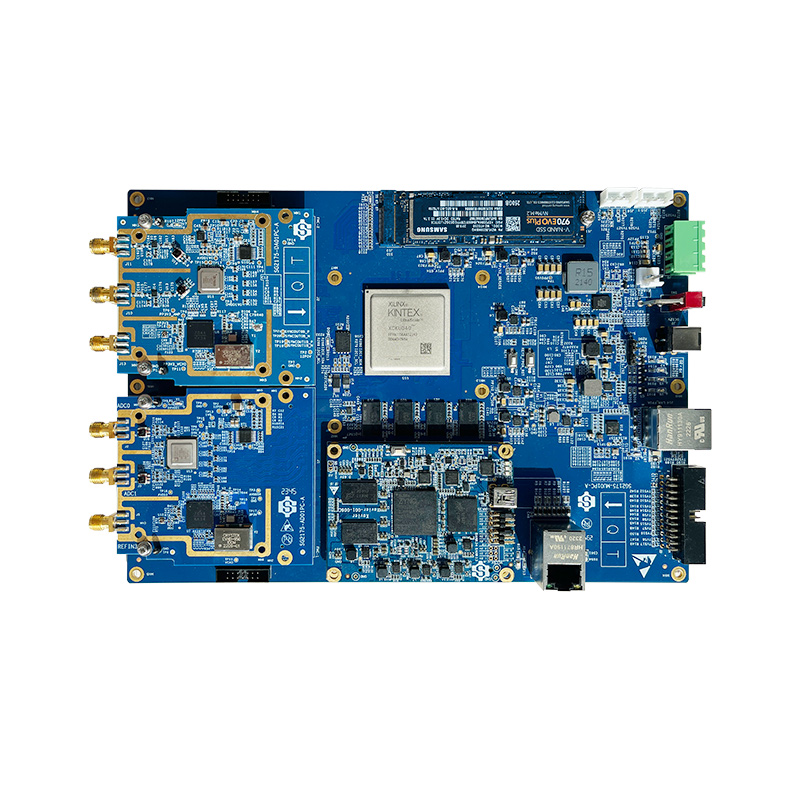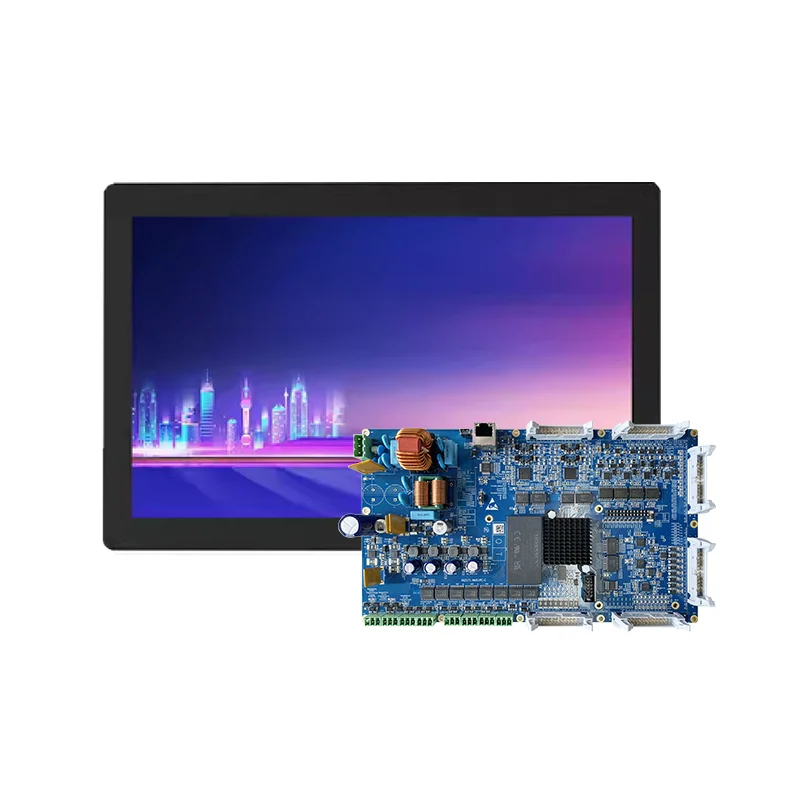
The Core Components of a DAQ System
In industrial automation, scientific research, and smart device development, Data Acquisition (DAQ) systems act as the “interpreter” between the physical and digital worlds—quietly powering the entire chain from signal sensing to decision-making. This article breaks down the core components of a DAQ system and showcase how Smartgiant’s DAQ product lineup transforms advanced technology into practical productivity, providing accurate data acquisition solutions across industries.
1. The Five Core Components of a DAQ System: Giving Voice to Physical Signals
At its core, a DAQ system converts real-world physical signals—such as temperature, vibration, and electrical current—into digital data that can be processed by computers. This transformation relies on five key components working in unison, which can be understood through the logic of “sensing – conditioning – translating – processing – commanding.”
1.1 Sensors: The “Eyes and Ears” a DAQ System
Sensors serve as the front-end of a DAQ system, responsible for converting various physical quantities into electrical signals. Examples include:
- Thermocouples convert temperature differences into voltage (e.g., monitoring furnace temperatures).
- Strain gauges convert mechanical stress into resistance changes (e.g., bridge health monitoring).
- Microphones convert sound vibrations into analog voltages (e.g., acoustic environment analysis).
Key Consideration: Choose sensors based on the measurement range, required accuracy, and environmental compatibility (e.g., high-temperature or high-pressure environments require specialized sensors).
1.2 Signal Conditioning Modules: The “Signal Cleanroom”
Raw sensor signals often carry noise or are too weak, Signal conditioning modules process them through:
- Amplification: Boosting microvolt-level signals (e.g., bioelectrical signals) for easier digitization.
- Filtering: Removing unwanted frequency noise (e.g., industrial electromagnetic interference) via low-pass or high-pass filters.
- Isolation: Protecting backend equipment from high-voltage interference (e.g., in power systems).
Think of this module as a camera filter—ensuring clear, usable signals for further processing..
1.3 DAQ Cards: The “Digital Translators” of Analog Signals
DAQ cards are the system’s core. Through ADCs (Analog-to-Digital Converters), they digitize analog signals and pass them to computers. Key specs include:
- Sampling Rate: Number of samples per second (e.g., 5GSa/s means 5 billion samples/sec), which determines how well rapid signal changes are captured.
- Resolution: Bit depth of the ADC (e.g., 16-bit, 24-bit), which dictates the smallest detectable signal variation.
- Channel Count: Number of simultaneous input signals supported (e.g., single-channel or 8-channel), affecting the ability to acquire multiple signals synchronously.
Tech Highlight: High-end DAQ cards integrate FPGAs (Field-Programmable Gate Arrays) for real-time signal processing—such as filtering and feature extraction—offloading heavy computations from the host computer.
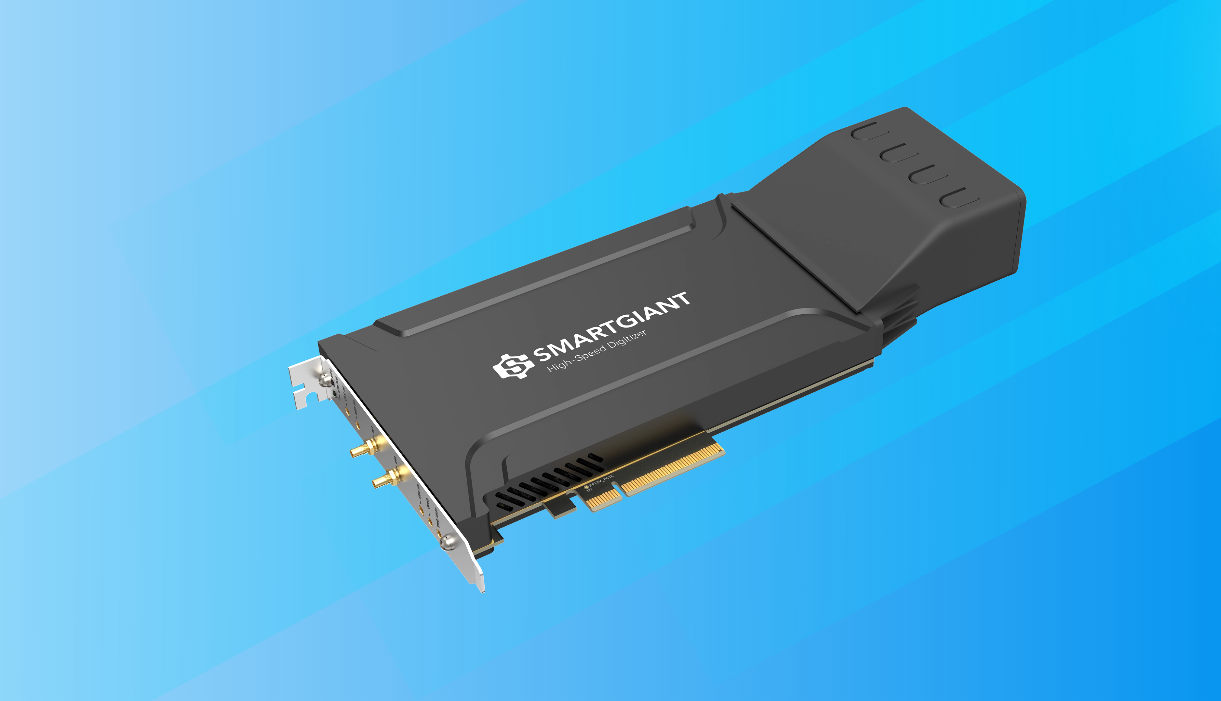
1.4 Software Systems: The “Command Center” for Data
DAQ software configures hardware, manages data acquisition, and performs analysis. Common tools include LabVIEW and MATLAB. In high-performance systems, the software can coordinate with FPGAs for real-time responses—like automatic triggers based on thresholds.
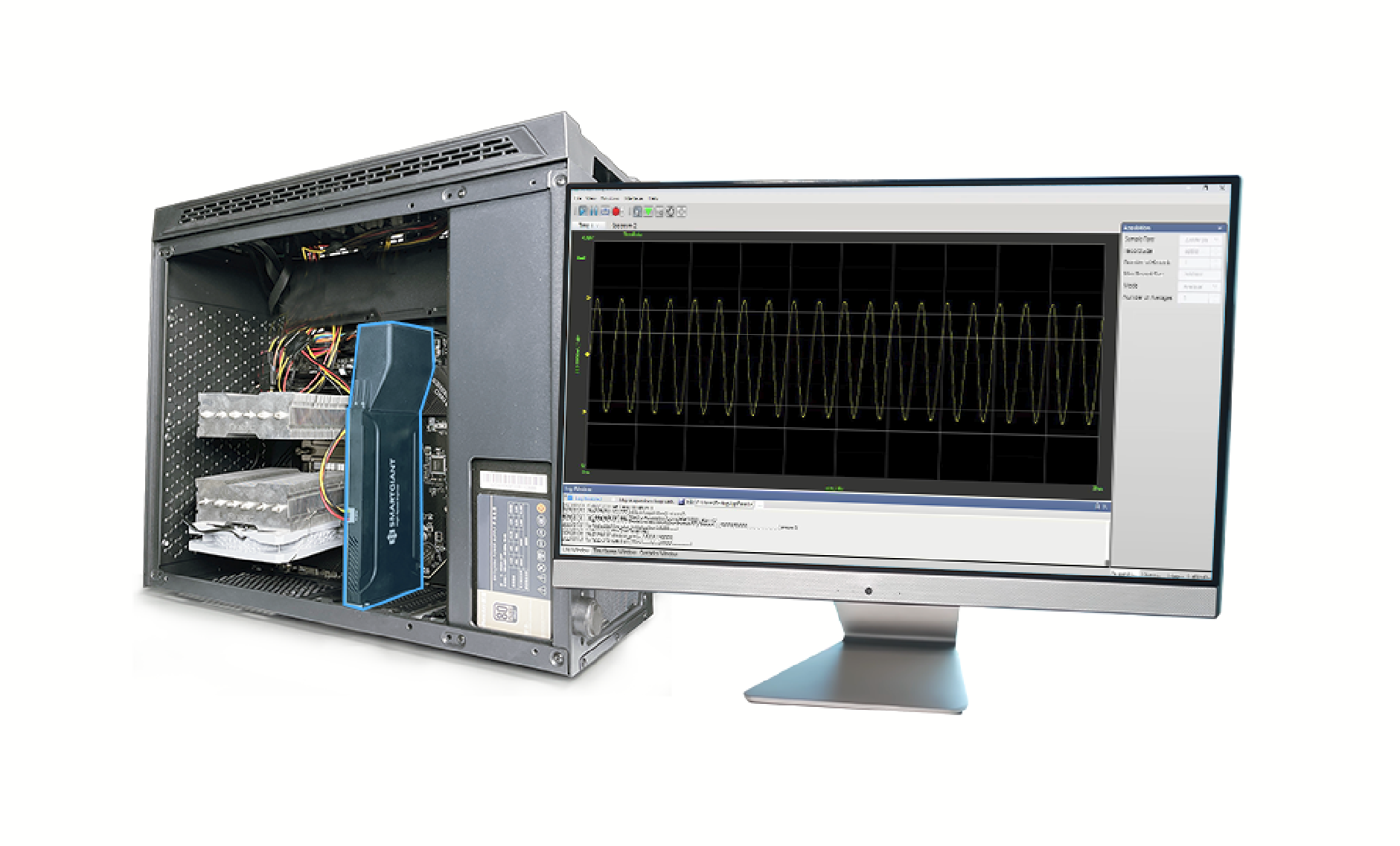 1.5 Host System: The “Decision Engine” Behind the Data
1.5 Host System: The “Decision Engine” Behind the Data
The host—whether a PC, embedded controller, or cloud server—handles data storage, in-depth analysis, and issuing control commands. For instance:
- In manufacturing, it adjusts heating power based on temperature data.
- In research, it uncovers underlying physical laws through big data analytics.
Trend: With the rise of edge computing, some DAQ systems now feature embedded processors (e.g., ARM chips) that perform local pre-processing, reducing cloud reliance.
2. Smartgiant’s DAQ Product Portfolio: From Ultra-Fast Capture to Precision Measurement
As a technology-driven company deeply engaged in data acquisition, Smartgiant offers four major DAQ product lines, covering both general-purpose and highly customized needs:
2.1 SG1227 PCIe High-Speed ADC Card – The Speed Expert
Overview:
Designed for high-frequency data capture, the SG1227 features an 8-bit dual-channel ADC and Xilinx XCKU040 FPGA. It supports up to 5GSa/s sampling and 500MHz analog bandwidth, ideal for semiconductor testing and laser signal analysis. An 8-lane PCIe 3.0 interface and 4GB DDR4 memory ensure low-latency, high-throughput data handling.
Key Features:
- Top-tier Performance: Dual-channel 2.5GSa/s or 5GSa/s (interleaved), ENOB 6.2 @10MHz, SNR 39dB — perfect for nanosecond pulse detection.
- Flexible Configuration: Supports 3 clock sources and 9 input ranges (50mVpp to 5Vpp), covering DC to 500MHz.
- Advanced Triggering: External TRG IN/OUT, programmable GPIO, and support for rising/falling edge or level triggers to meet complex test workflows.
Typical Applications:
- Semiconductor Testing: High-speed signal integrity analysis for chip pin characteristics.
- Laser Sensing: Real-time laser pulse echo acquisition, including point cloud preprocessing.
- Precision Instrumentation: High-speed data capture in mass spectrometry and laser devices.
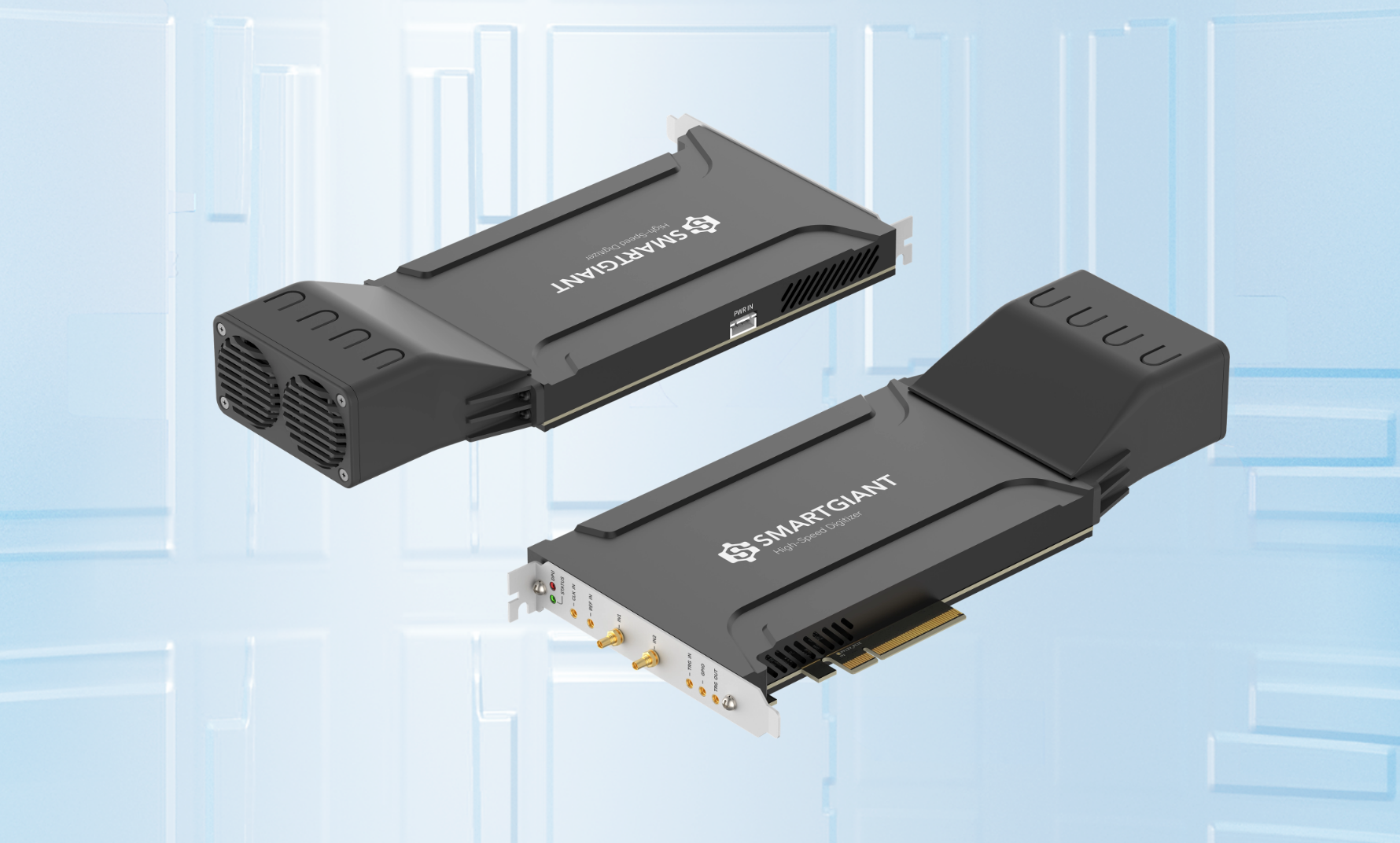
2.2 High-Speed Acquisition Module – Compact and Power-Efficient
Overview:
The high-speed acquisition module is a dual-channel, high-precision module featuring a 12-bit ADC and FPGA architecture. With a maximum 125Msps sampling rate and 30MHz bandwidth, it’s optimized for embedded systems and supports user-defined FPGA algorithms for on-board hardware acceleration.
Key Features:
|
Index |
Parameters |
Technical Advantages |
|
Form Factor & Power |
Compact, ≤5W |
Ideal for battery-powered use (e.g., drones) |
|
Input Range |
±0.9V full scale, DC coupled, 1MΩ input |
Excellent for weak signal acquisition |
|
Customization |
VHDL/Verilog support |
Efficient algorithm implementation in FPGA |
|
Interfaces |
SMA and PCIe extension |
Easy integration and channel expansion |
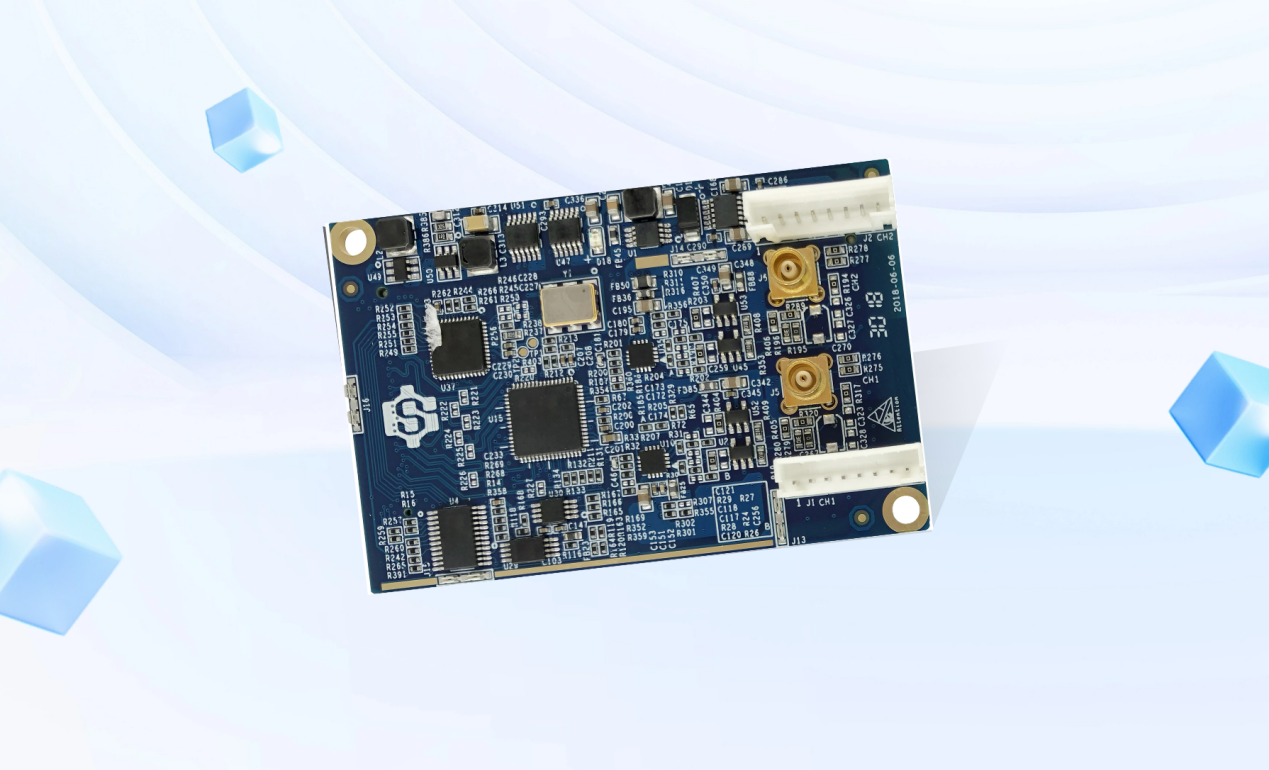
Typical Applications:
- Wireless Communication: Used for RF signal acquisition and preprocessing, supporting signal quality analysis of base station equipment and multi-node synchronized acquisition in wireless sensor networks.
- Biomedical Devices: Ultrasound signal acquisition and imaging preprocessing, supporting the development of portable ultrasound equipment.
2.3 SG2168 High-Speed Acquisition BOX: The All-Rounder
Overview:
The SG2168 is a highly integrated solution for industrial and research applications. It features a 14-bit ADC and Xilinx MPSoC processor, offering dual-channel 500MSPS sampling and 200MHz analog bandwidth. With a precise triggering system and versatile I/O (Gigabit Ethernet, CAN, RS485), it supports both standalone and networked operation.

Key Features:
|
Index |
Parameters |
Technical Advantages |
|
Resolution |
14-bit |
Low quantization error (1/16384) for accuracy |
|
Channels |
2 |
Synchronous acquisition (e.g., differential/IQ) |
|
Triggering |
Internal/external, edge/level modes |
Accurate event synchronization |
|
Communication |
Ethernet, CAN, RS485/RS232 |
Supports plug-and-play industrial networking |
Typical Applications:
- Industrial Automation Control: Serves as the core acquisition unit of intelligent production lines, enabling real-time monitoring of multi-parameter signals such as motor current and bearing vibration. With edge-triggering mechanisms, it accurately captures transient data during equipment start and stop events, supporting predictive maintenance and energy efficiency optimization for industrial equipment.
- New Energy Testing: Captures voltage and current fluctuations during the charge and discharge cycles of lithium batteries to analyze their electrochemical characteristics.
2.4 sDAQ Smart Data Acquisition System: The Modular Powerhouse
Overview:
sDAQ is a modular smart data acquisition device featuring a fully integrated architecture of “sensors + measurement hardware + software.” It supports hybrid acquisition of digital and analog signals (including voltage, current, temperature, etc.). Designed to industrial-grade standards, it balances high performance with reliability. Its modular design allows users to flexibly expand I/O modules based on specific needs, making it ideal for field testing and mobile measurement scenarios.
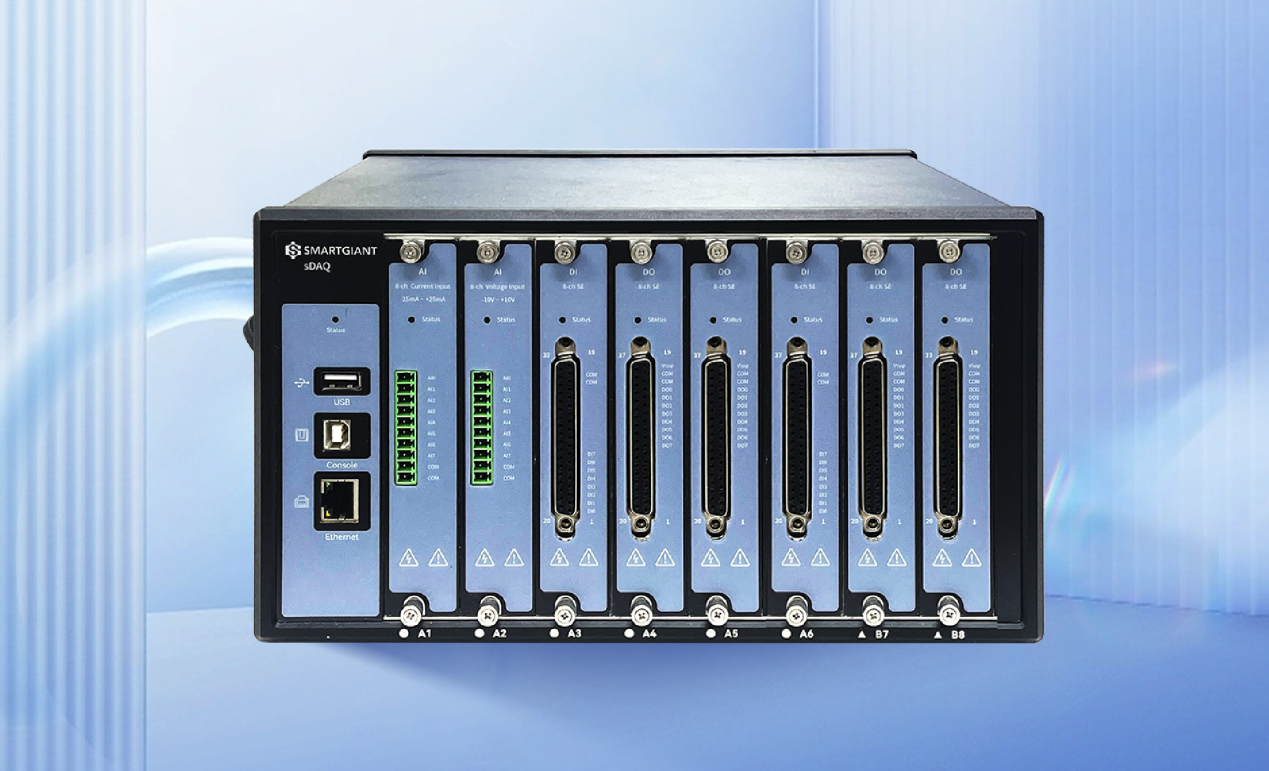
Key Features:
|
Index |
Parameters |
Technical Advantages |
|
Modular Design |
Analog voltage/current, RTD, strain |
Flexible combination reduces cost (e.g., 8-channel strain) |
|
Synchronization |
Nanosecond-level across channels |
Perfect for phase-critical tasks (e.g., motor control) |
|
Industrial Durability |
-40℃ to +70℃, anti-vibration |
Suitable for harsh environments (e.g., mines) |
Typical Applications:
- Industrial Automation: Real-time multi-parameter monitoring (e.g., motor current, bearing temperature).
- Environmental Monitoring: Customized sensor networks for temperature, gas, and pressure.
- Food & Beverage Industry: Vibration monitoring to ensure stable production processes.
3. Quick Product Selection Guide: Find the Right Fit Fast
How to choose the most suitable solution according to actual needs? The chart below offers a quick guide based on key application dimensions:
|
Requirement |
High-Speed |
High-Precision |
Multi-Function |
Low-Power |
|
Sampling Rate |
≥1GSa/s (e.g., SG1227) |
≥100MSPS, ≥14-bit (e.g., SG2168) |
200kSPS–100MSPS (e.g., sDAQ) |
≤125Msps (e.g., high-speed acquisition module) |
|
Resolution |
8–12 bit (speed-first) |
14–24 bit (precision) |
16–24 bit (versatility) |
12-bit (balanced) |
|
Bandwidth |
≥500MHz (RF/pulses) |
≤200MHz (low-frequency) |
DC to 100kHz (sensors) |
≤30MHz (embedded) |
|
Recommended Product |
SG1227 PCIe Card |
SG2168 Acquisition BOX |
sDAQ Smart System |
High-Speed Acquisition Module |
4. Act Now: Seize the Edge in Data Acquisition Innovation
DAQ systems form the precision bridge between the physical world and the digital future. At Smartgiant, we harness ultra-fast sampling, modular design, and customizability to turn every signal into a spark for innovation. From nanosecond pulses to microvolt bio-signals, from industrial floors to cutting-edge labs—our technology matches the complexity of your scenario with pinpoint accuracy.
Choosing Smartgiant DAQ means choosing to measure the future with data—capturing fast signals with clarity, synchronizing diverse data sources, and giving every innovative idea a path to reality.
Visit our website now to explore the full range of DAQ products and application examples.
Contact Us
Smartgiant Technology 1800 Wyatt Dr, Unit 3, Santa Clara, CA 95054.
Email: info@smartgiant.com
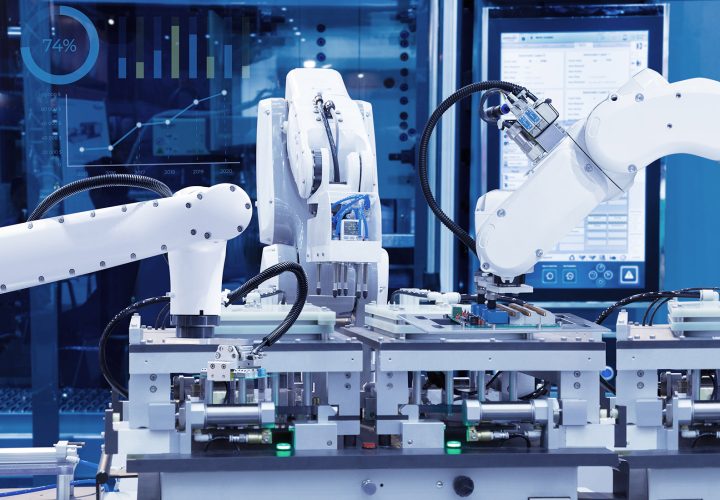
Contact Us
Smartgiant Technology 1800 Wyatt Dr, Unit 3, Santa Clara, CA 95054.
Email: info@smartgiant.com



